Static and Dynamic Response of Micropiles Used for Reinforcing Slopes
Abstract
:Featured Application
Abstract
1. Introduction
2. Model Test
2.1. Scaling Law
2.2. Test Materials and Preparation Process
2.2.1. Model Box
2.2.2. Model Soil
2.2.3. Micropiles and Top Slab
2.2.4. Preparation Process
2.3. Loading Scheme and Measuring Scheme
2.3.1. Loading Scheme
2.3.2. Measuring Scheme
3. Results
3.1. Test Phenomenon
3.2. Displacement Response Analysis
3.3. Earth Pressure Response Analysis
3.4. The Internal Force Response Analysis of the Pile
3.4.1. The Bending Moment Response of Pile
3.4.2. The Axial Force Response of Pile
4. Discussion
5. Conclusions
Author Contributions
Funding
Institutional Review Board Statement
Informed Consent Statement
Data Availability Statement
Acknowledgments
Conflicts of Interest
References
- Gao, Y.; Li, B.; Gao, H.; Chen, L.; Wang, Y. Dynamic Characteristics of High-Elevation and Long-Runout Landslides in the Emeishan Basalt Area: A Case Study of the Shuicheng ‘7.23′ Landslide in Guizhou, China. Landslides 2020, 17, 1663–1677. [Google Scholar] [CrossRef]
- Warrick, J.A.; Ritchie, A.C.; Schmidt, K.M.; Reid, M.E.; Logan, J. Characterizing the catastrophic 2017 Mud Creek landslide, California, using repeat structure-from-motion (SfM) photogrammetry. Landslides 2019, 16, 1201–1219. [Google Scholar] [CrossRef]
- Igwe, O. The characteristics and mechanisms of the recent catastrophic landslides in Africa under IPL and WCoE projects. Landslides 2018, 15, 2509–2519. [Google Scholar] [CrossRef]
- Zhang, M.; Yin, Y.; McSaveney, M. Dynamics of the 2008 earthquake-triggered Wenjiagou Creek rock avalanche, Qingping, Sichuan, China. Eng. Geol. 2016, 200, 75–87. [Google Scholar] [CrossRef]
- Ma, C.; Yan, Z.W.; Huang, P.; Gao, L. Evaluation of Landslide Susceptibility Based on the Occurrence Mechanism of Landslide: A Case Study in Yuan’an County, China. Environ. Earth Sci. 2021, 80, 94. [Google Scholar] [CrossRef]
- Wallemacq, P.; Below, R.; McLean, D. Economic Losses, Poverty and Disasters 1998–2017; United Nations Office for Disaster Risk Reduction (UNDRR) and Centre for Research on the Epidemiology of Disasters (CRED) Publications: Brussels, Belgium, 2018. [Google Scholar] [CrossRef]
- Deng, Y.S.; Sun, Y.N.; Zhao, M.H.; Wu, P.; Wang, Q. Experimental and Calculation Analysis of Slope Protection by Collaborated Micropiles and Vetiver. China J. Highw. Transport. 2020, 33, 68–75. [Google Scholar] [CrossRef]
- Bayesteh, H.; Fakharnia, M.A.; Khodaparast, M. Performance of driven grouted micropiles: Full-scale field study. Int. J. Geomech. 2021, 21, 04020250. [Google Scholar] [CrossRef]
- Men, Y.M.; Yan, J.K. Research Report on Large-Scale Physical Model test of Landslide Micro-Pile Prevention Technology; Chang’an University: Xi’an, China, 2011. [Google Scholar]
- Yan, J.K.; Yin, Y.P.; Men, Y.M. Experimental study on reinforcement of landslide micro-pile group. China Civil. Eng. J. 2011, 44, 120–128. [Google Scholar] [CrossRef]
- Wang, S.F. Research on the Micro-Pile Prevention and Control Project of Wenchuan Earthquake Landslide; Chang’an University: Xi’an, China, 2010. [Google Scholar]
- Richards, T.D.; Rothbauer, M.J. Lateral loads on pin piles (micropiles). In Geo-Support 2004: Drilled Shafis, Micropile, Deep Mixing, Remedial Methods, and Specialty Foundation Systems, Geotechnical Special Publication 124; Turner, J.P., Mayne, P.W., Eds.; ASCE: Reston, VA, USA, 2004; pp. 158–174. [Google Scholar] [CrossRef]
- Andrew, Z.B. Load Transfer in Micropiles for Slope Stabilization from Test of Large-Scale Physical Models. D; University of Missouri-Columbia: Columbia, MO, USA, 2006. [Google Scholar]
- Bruce, D.A.; Caden, A.W.; Sabain, P.J. Practical Advice for Foundation Desig-micropiles or structural Support[C]//ASCE. In Proceedings of the Geo-Frontiers 2005 Congress; ASCE: Reston, VA, USA, 2005; pp. 1–25. [Google Scholar] [CrossRef] [Green Version]
- Freitas, A.C.D.; Danziger, B.R.; Pacheco, M.; Gerscovich, D.M.S. 3-D predictions of installation and group effect on driven piles in sands. Int. J. Geotech. Eng. 2014, 9, 101–112. [Google Scholar] [CrossRef]
- Wolter, A.; Gischig, V.; Stead, D.; Clague, J.J. Investigation of geomorphic and seismic effects on the 1959 Madison canyon, Montana, landslide using an integrated field, engineering geomorphology mapping, and numerical modelling approach. Rock Mech. Rock Eng. 2015, 49, 2479–2501. [Google Scholar] [CrossRef]
- Moayed, R.Z.; Naeini, S.A. Imrovement of loose sandy soil deposits using micropiles. KSCE J. Civ. Eng. 2012, 16, 334–340. [Google Scholar] [CrossRef]
- Komak, P.A.; Jalilian, M.H.; Yin, J.H.; Fai, L.Y. Shaking table investigation of effects of inclination angle on seismic performance of micropiles. Int. J. Geomech. 2018, 18, 04018142. [Google Scholar] [CrossRef]
- Capatti, M.C.; Dezi, F.; Morici, M. Field Tests on micropiles under dynamic lateral loading. Procedia Eng. 2016, 158, 236–241. [Google Scholar] [CrossRef] [Green Version]
- Rollins, K.M.; Johnson, S.R.; Petersen, K.T.; Weaver, T.J. Static and dynamic lateral load behavior of pile groups based on full-scale testing. In Proceedings of the 13th International Conference on Offshore and Polar Drilling, Honolulu, HI, USA, 25 May 2003; pp. 506–513. [Google Scholar]
- Zhuang, Y.Z.; Chen, Y.; Huang, F.Y.; Qian, H.M. Experimental study on the influence of frequency on micro-pile-soil dynamic interaction. World Bridges 2016, 44, 21–25. [Google Scholar] [CrossRef]
- Niu, W.Q. Experimental Study on Seismic Dynamic Characteristics of Micro-Pile Retaining Structure; China Academy of Railway Sciences: Beijing, China, 2016. [Google Scholar]
- Wang, M.W.; Tobita, T.; Iai, S. Centrifuge modeling of soil-pile interaction in liquefiable soils subjected to strong motion. Chin. J. Rock Mech. Eng. 2009, 28, 2012–2017. [Google Scholar] [CrossRef]
- Li, S.C.; Wang, H.P.; Zhang, Q.Y.; Li, Y. New type geo-mechanical similar material experiments research and its application. Key Eng. Mater. 2006, 326, 1801–1804. [Google Scholar] [CrossRef]
- Fan, Q.S.; Zhu, Z.C. Handbook of Material Mechanics; China Construction Industry Press: Beijing, China, 1981. [Google Scholar]

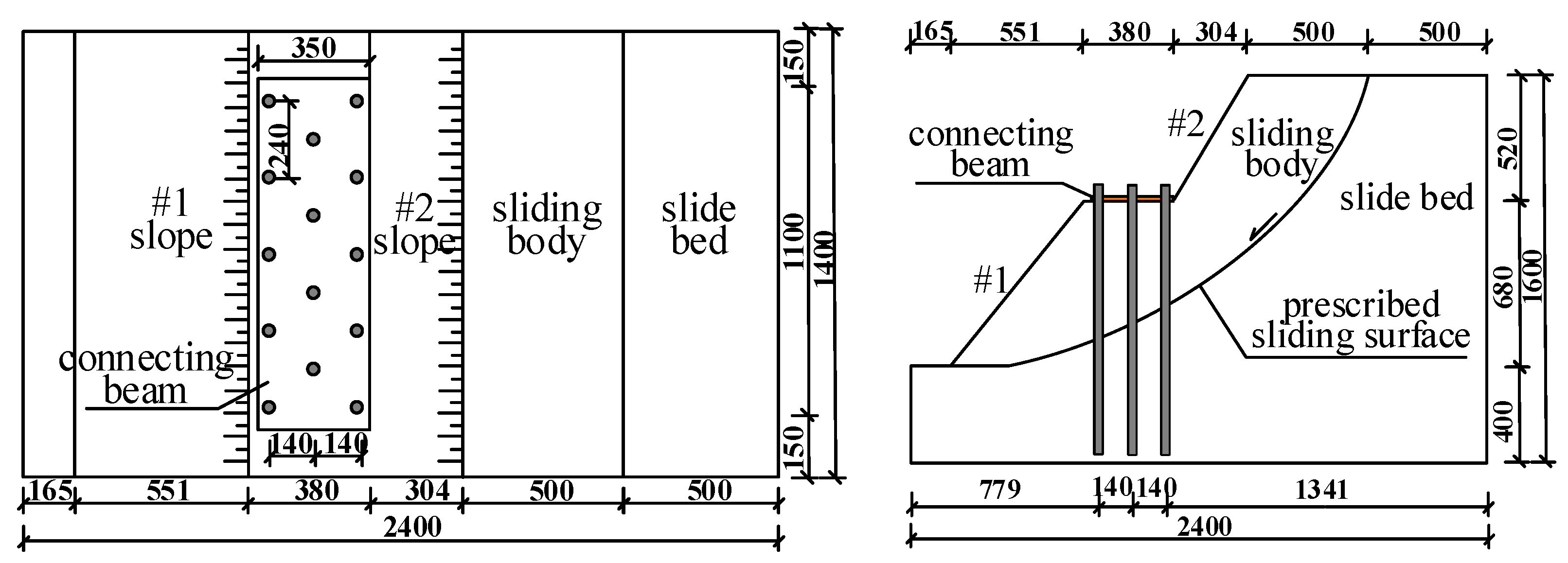
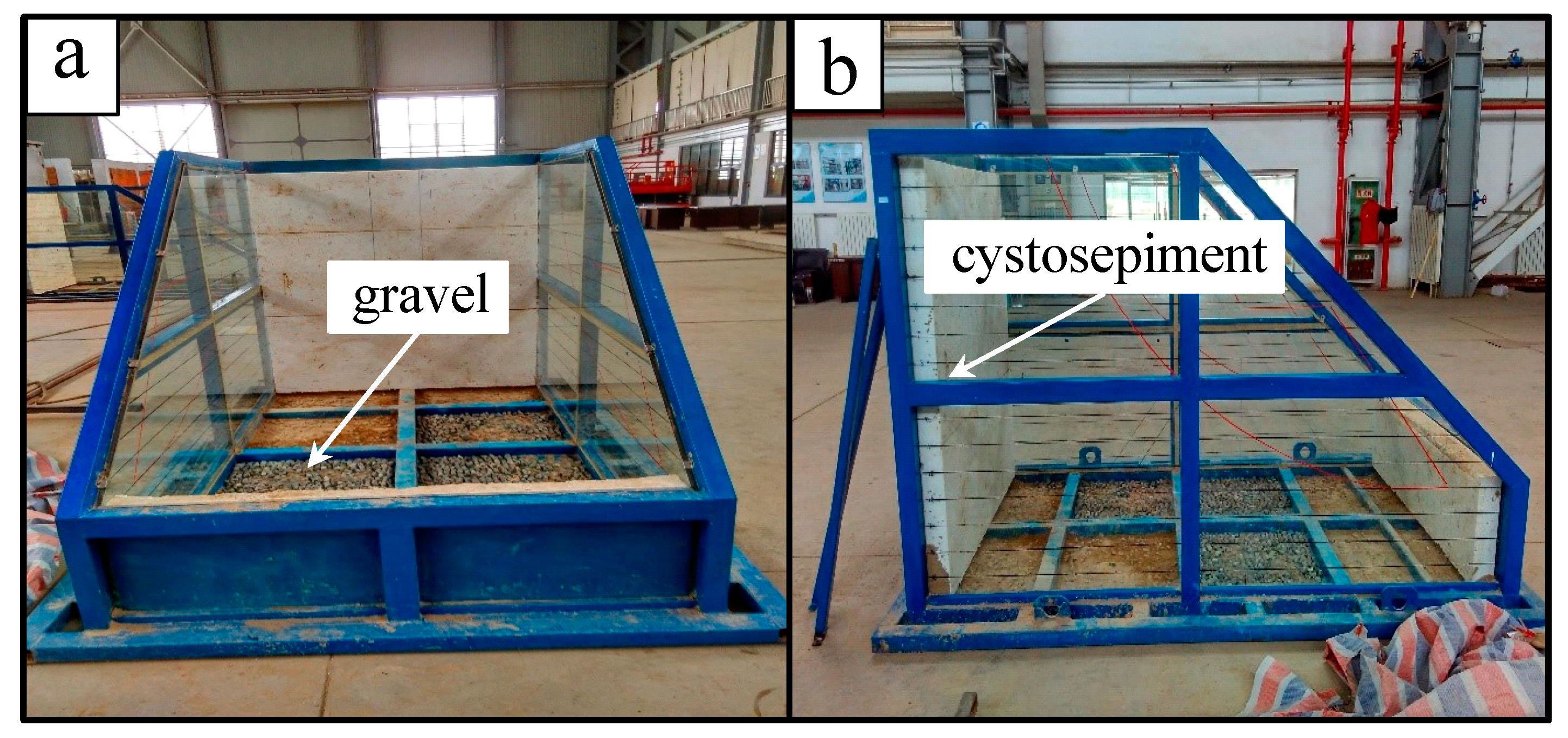
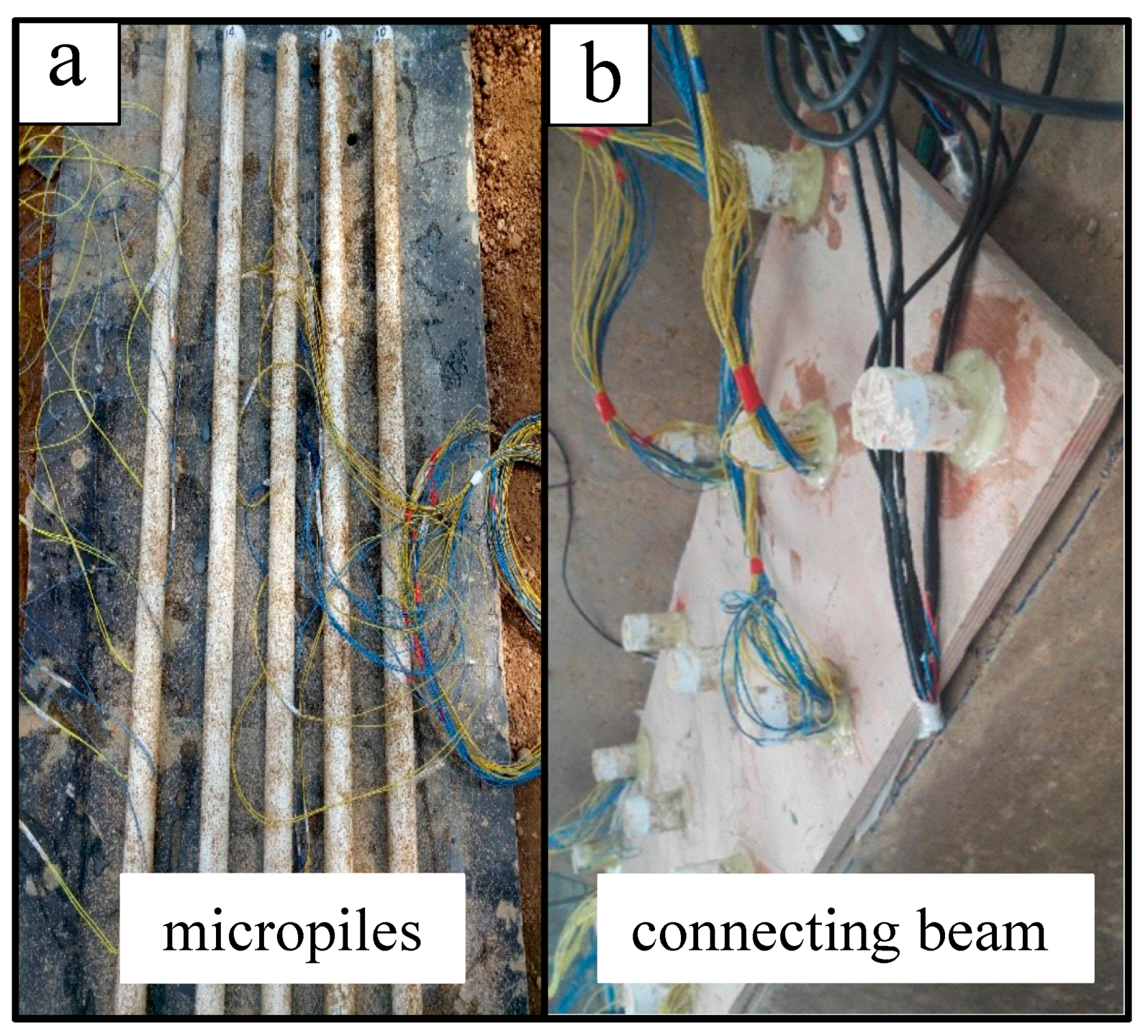





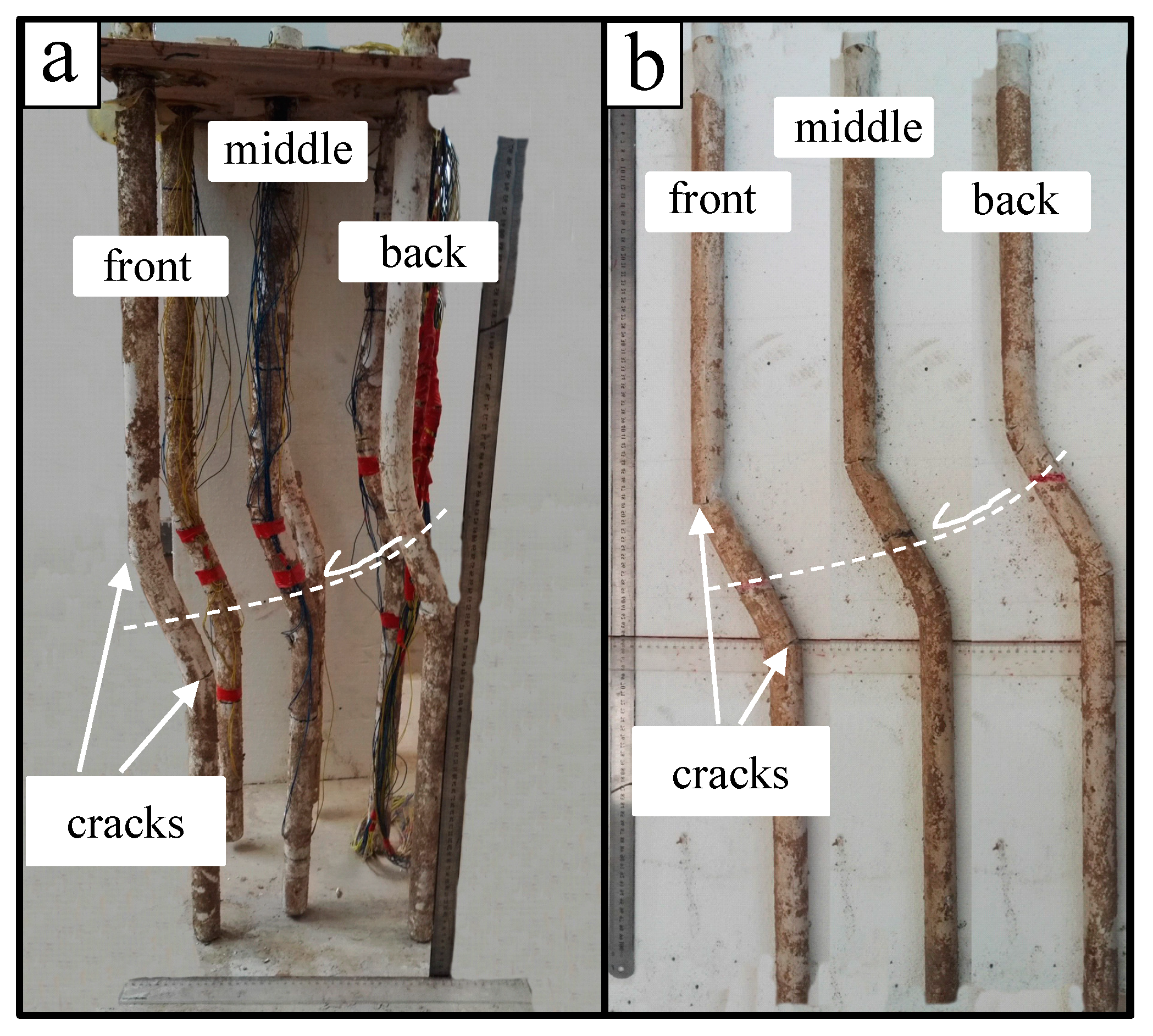
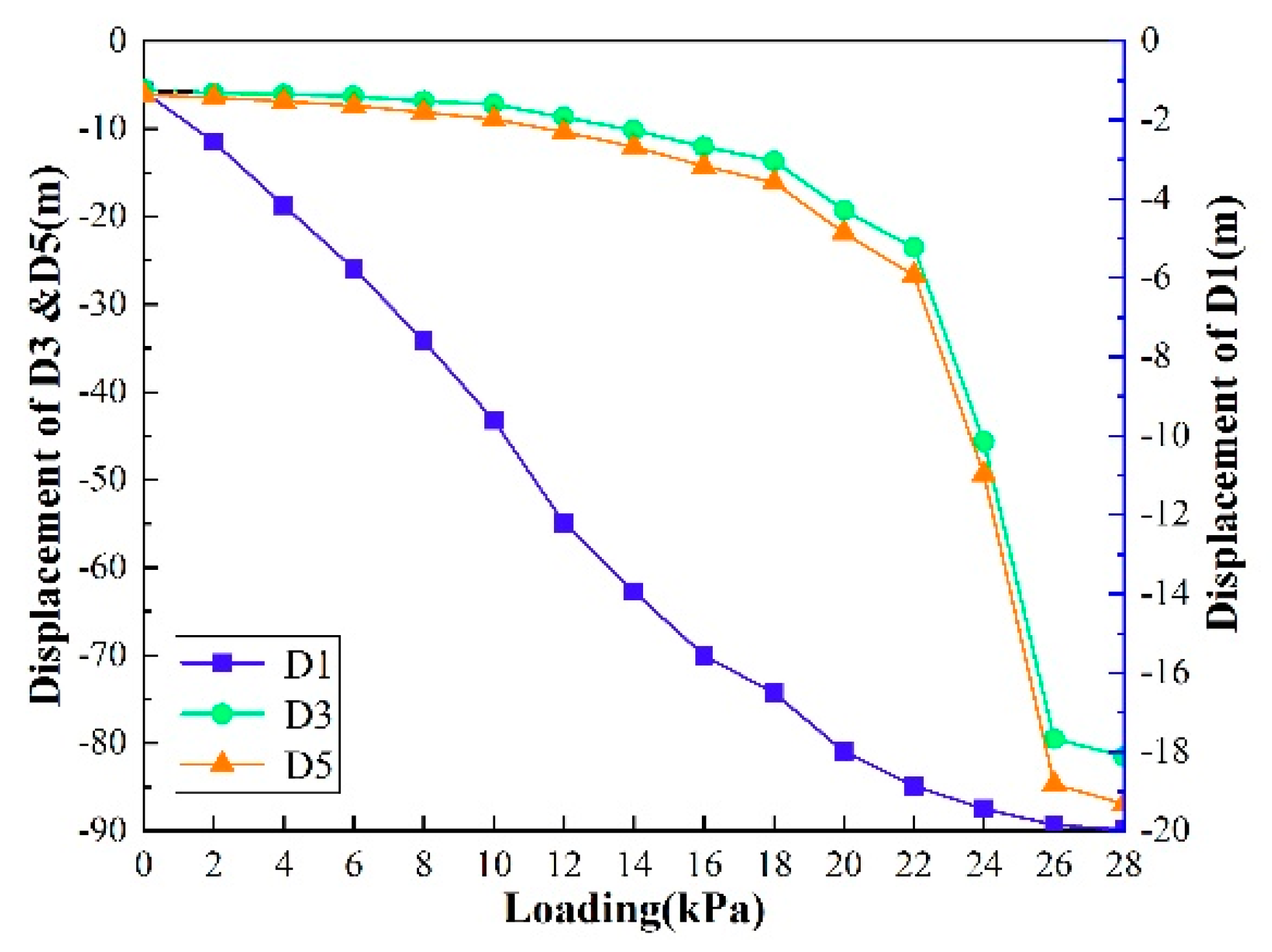
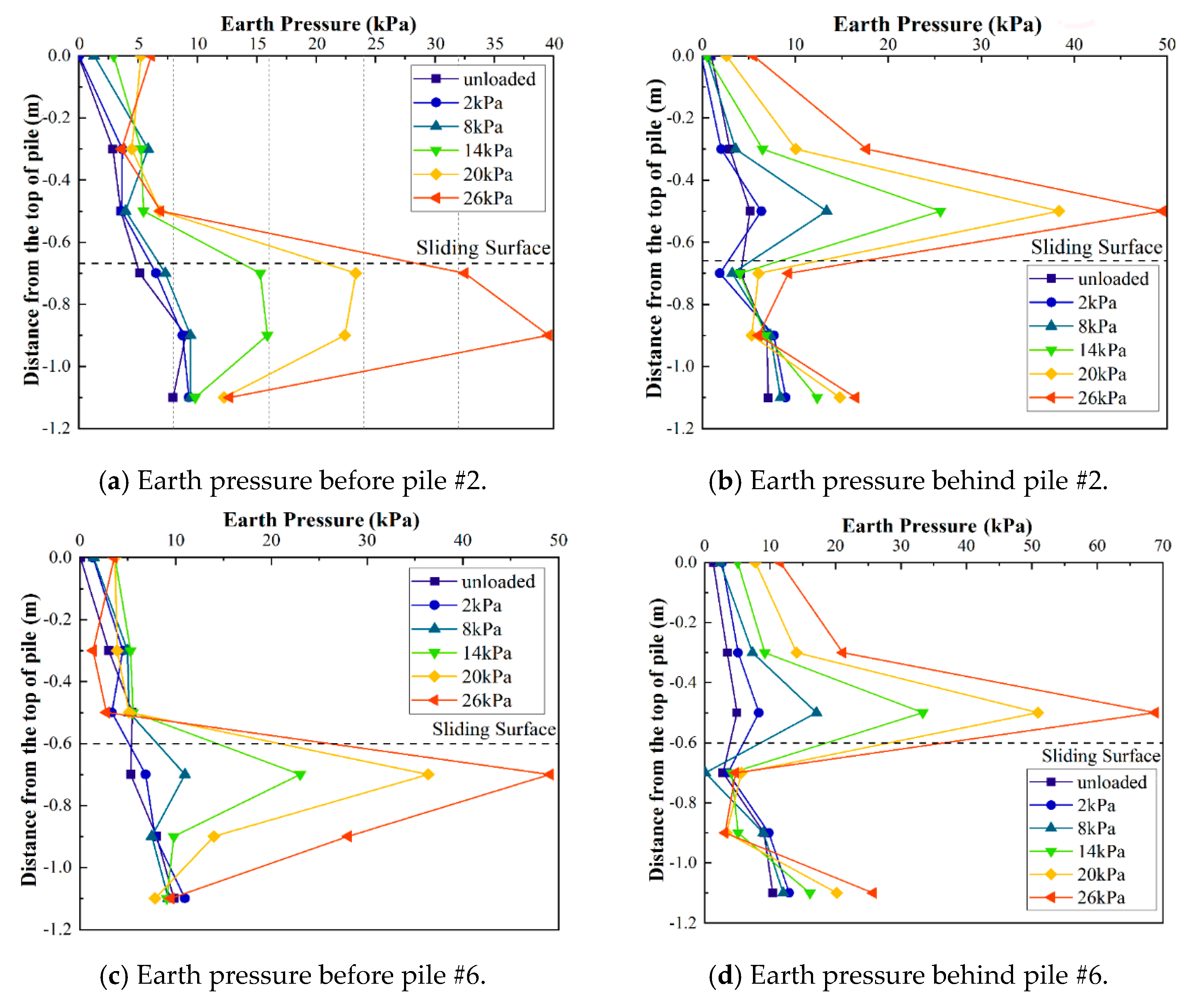

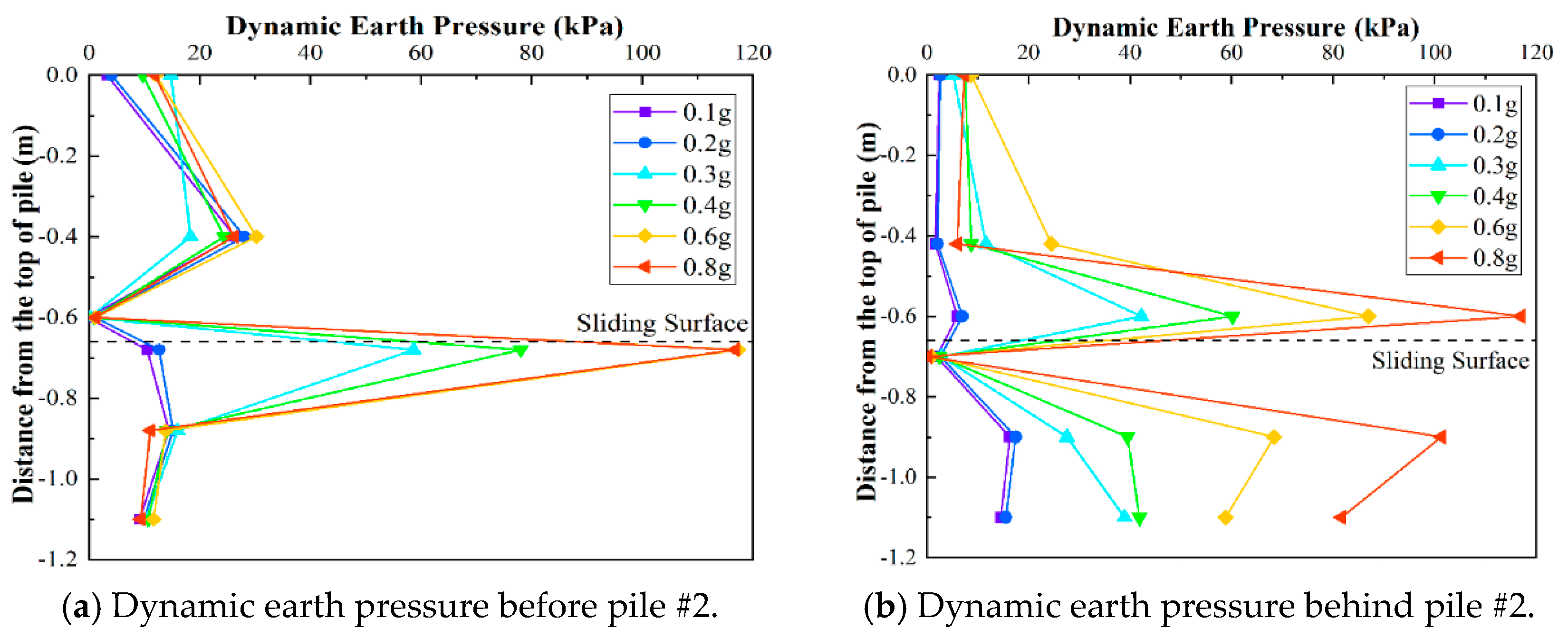
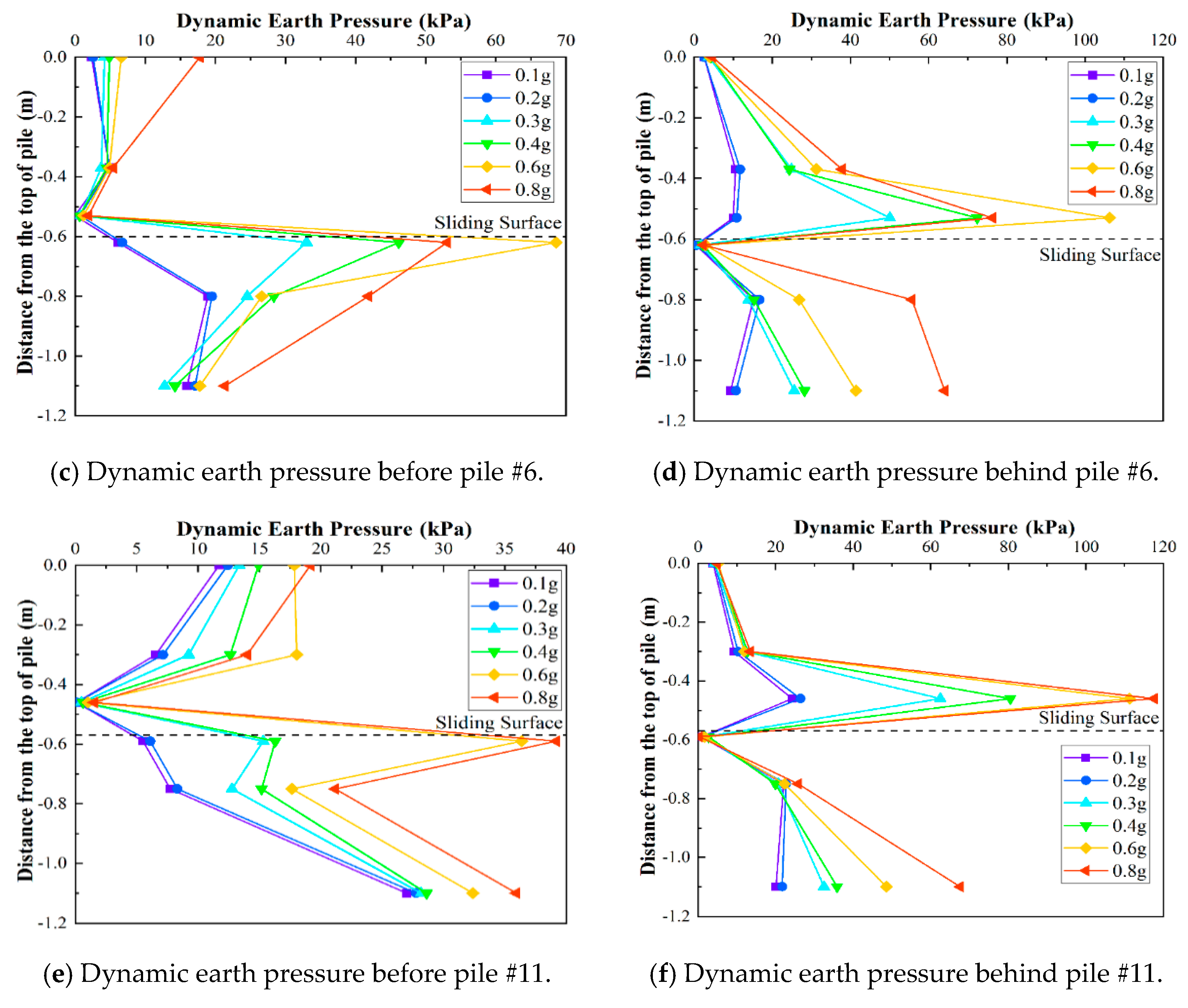
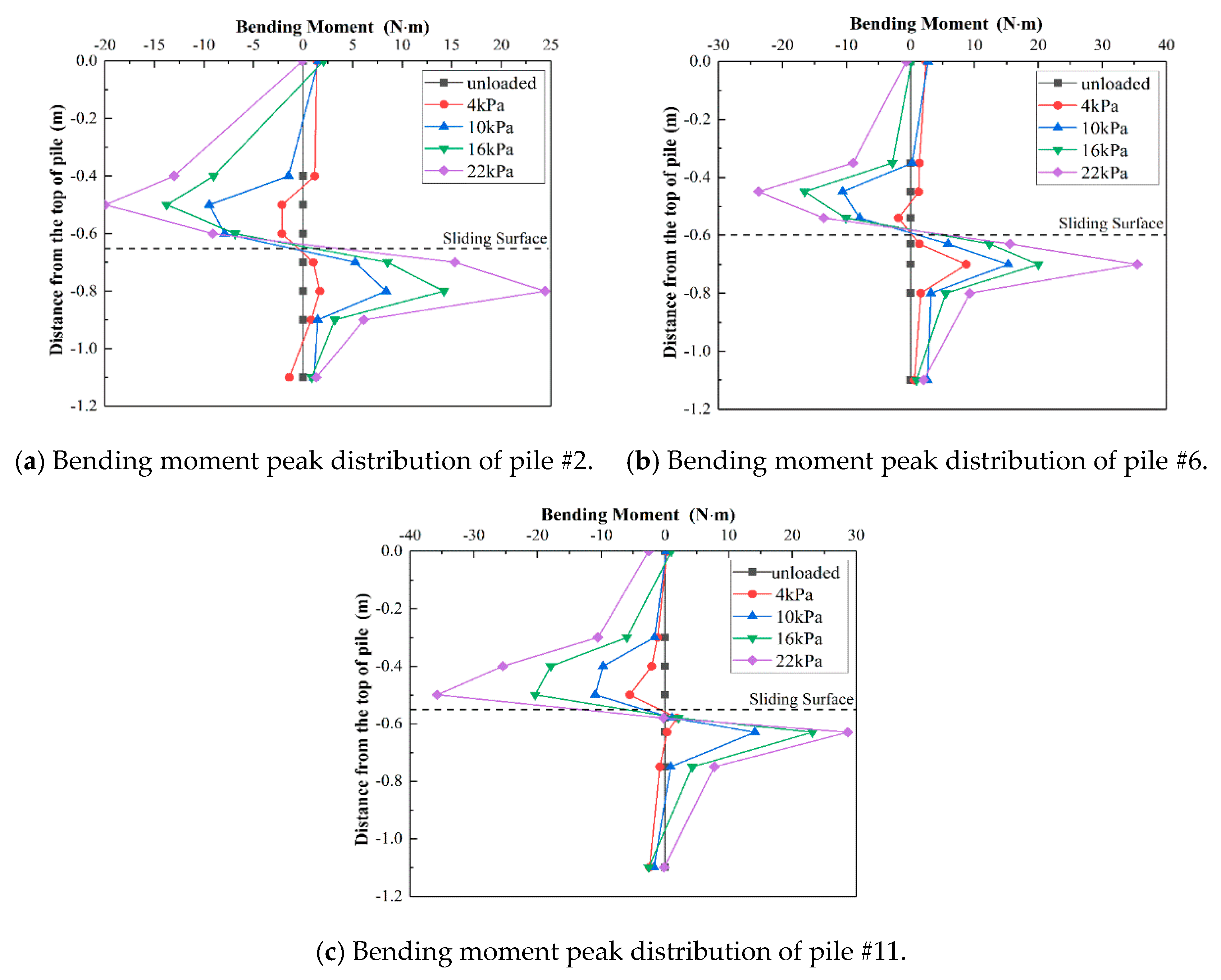
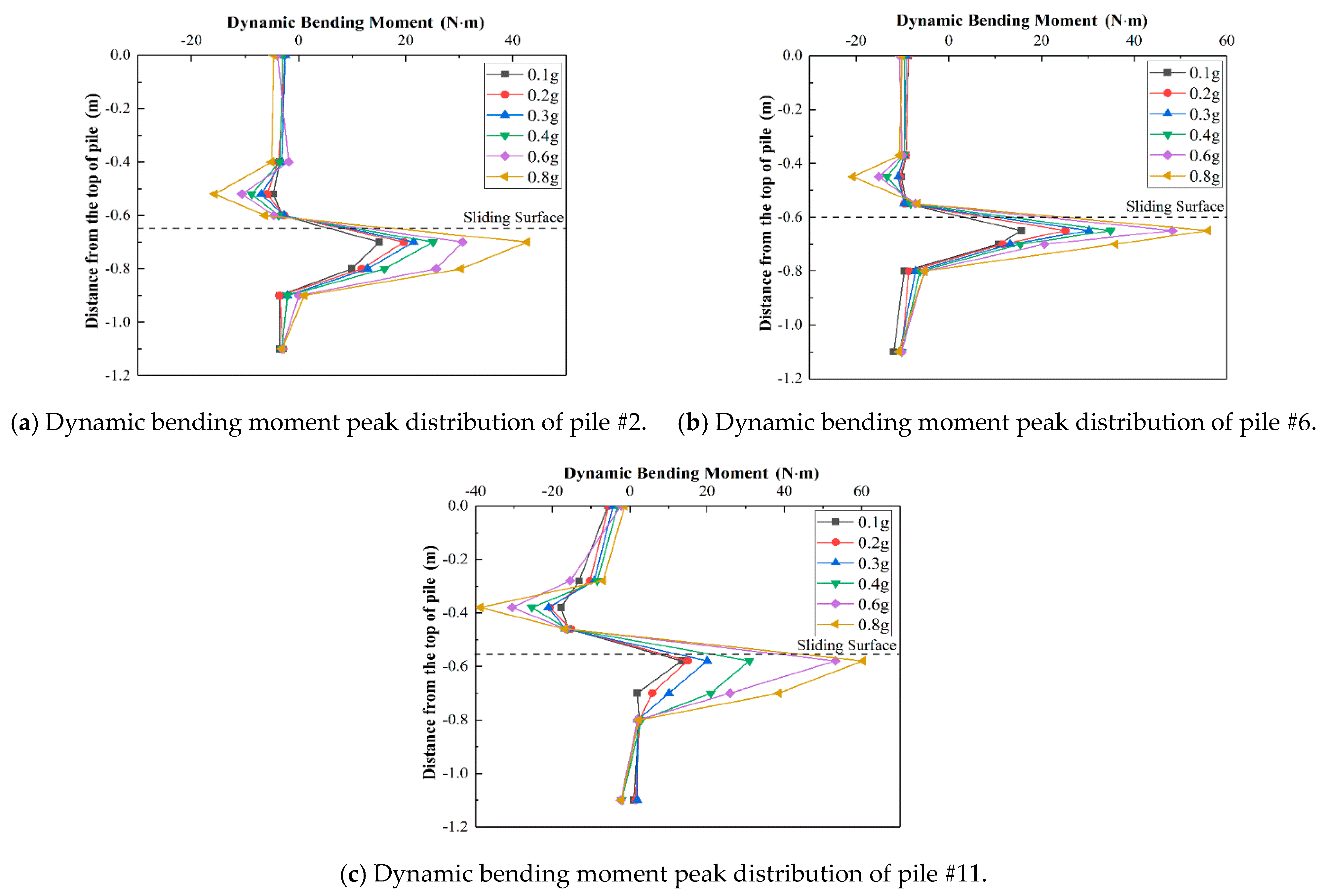
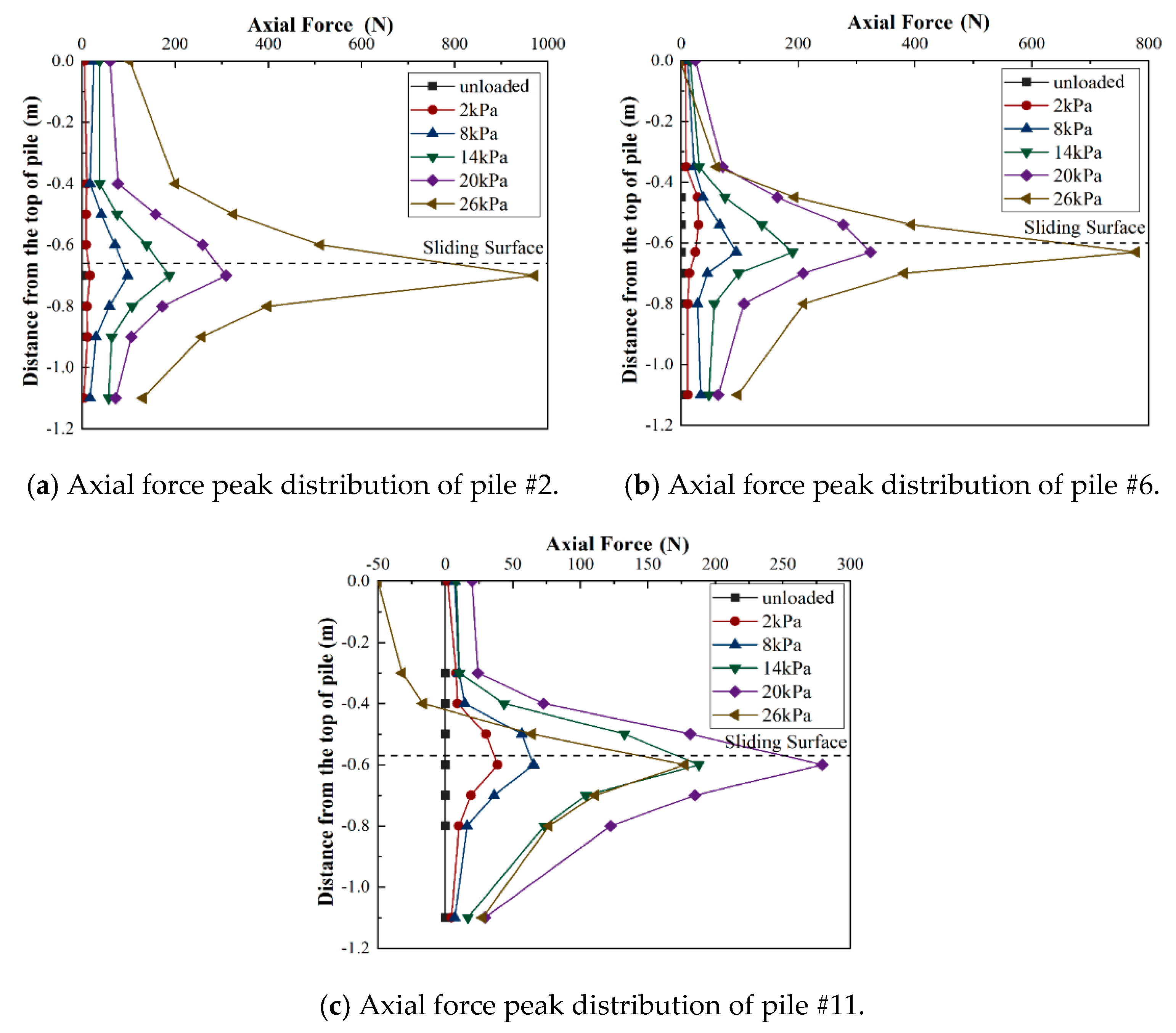
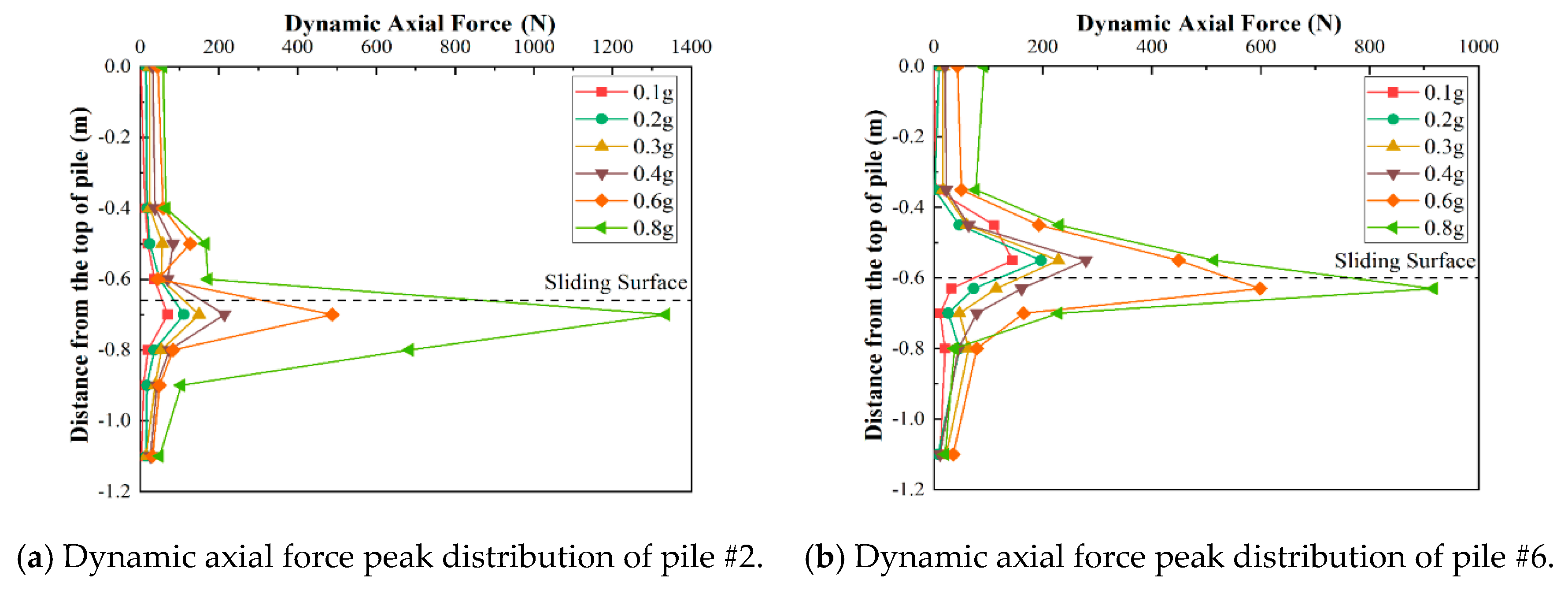
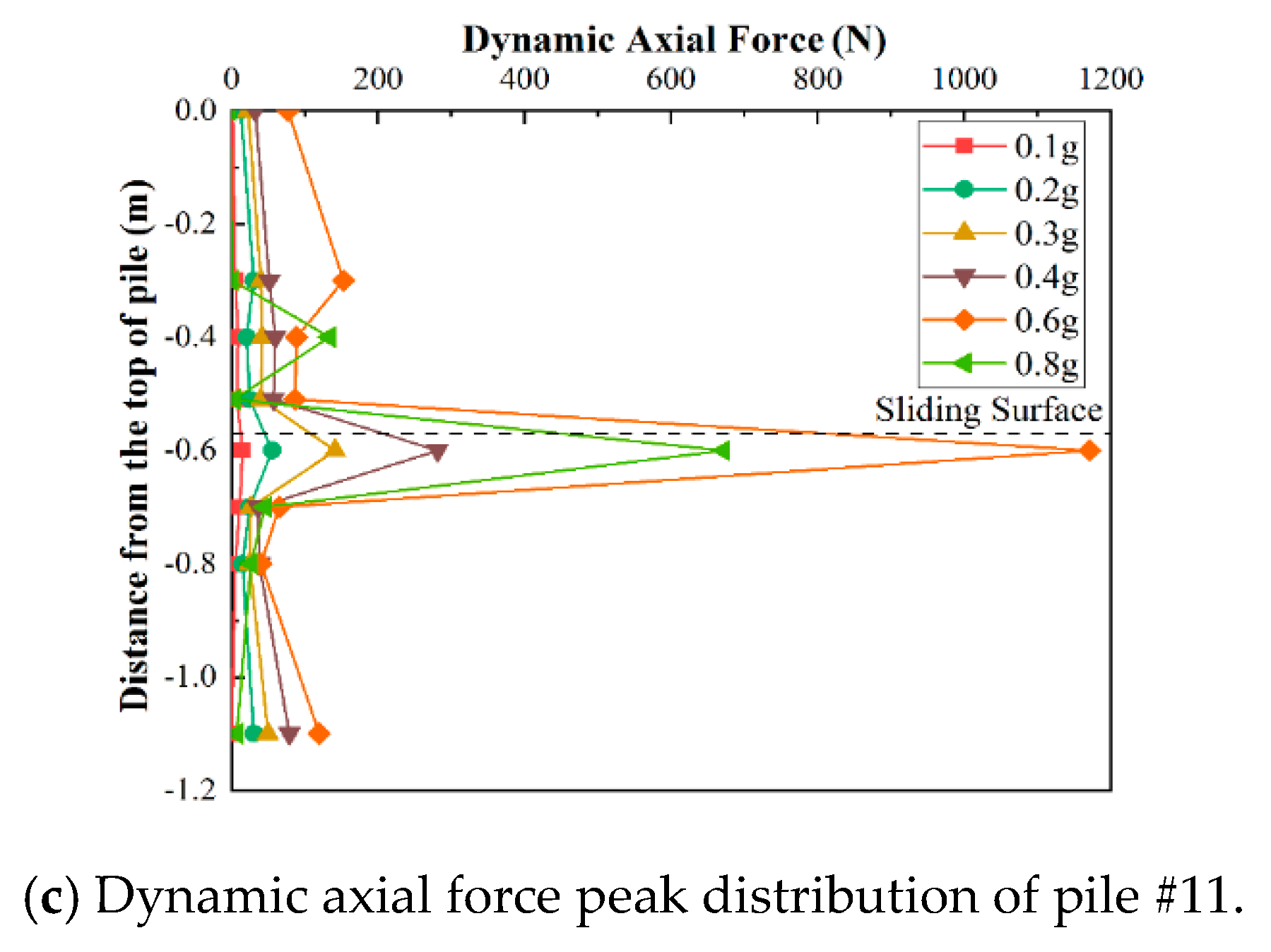
| Parameters | Similarity Law | Similarity Constants | Remarks |
|---|---|---|---|
| Geometry (L) | 8 | Control Variable | |
| Elasticity Modulus (E) | 3 | Control Variable | |
| Density (ρ) | 0.75 | Control Variable | |
| Load (F) | 192 | ||
| Stress (σ) | 3 | ||
| Strain (ε) | 1 | ||
| Flexural Stiffness (EI) | 12,288 | ||
| Poisson Ratio (μ) | 1 | ||
| Time (T) | 4 | ||
| Frequency (f) | 0.25 | ||
| Velocity (v) | 2 | ||
| Damping Coefficient (c) | 96 | ||
| Mass (M) | 384 | ||
| Stiffness (K) | 24 |
| Soil Specimen | Unit Weight γ (kN·m−3) | Water Content W (%) | Cohesion c (kPa) | Internal Friction Angle Φ (°) | Elasticity Modulus E (kPa) |
|---|---|---|---|---|---|
| Model Soil | 22.3 | 11.8 | 18.5 | 25.0 | 2.46 × 104 |
| Number | Input Wave | Acceleration Peak | Duration |
|---|---|---|---|
| 1 | EL-Centro | 0.1 g | 13.5 s |
| 2 | 0.2 g | ||
| 3 | 0.3 g | ||
| 4 | 0.4 g | ||
| 5 | 0.6 g | ||
| 6 | 0.8 g |
| Loading | 20 kPa | 22 kPa | 24 kPa | 26 kPa | |
|---|---|---|---|---|---|
| Location | |||||
| Back row pile | 0.399 | 0.411 | 0.400 | 0.370 | |
| Middle row pile | 0.345 | 0.348 | 0.354 | 0.369 | |
| Front row pile | 0.256 | 0.241 | 0.246 | 0.261 | |
| Loading | 0.3 g | 0.4 g | 0.6 g | 0.8 g | |
|---|---|---|---|---|---|
| Location | |||||
| Back row pile | 0.466 | 0.453 | 0.436 | 0.390 | |
| Middle row pile | 0.370 | 0.394 | 0.400 | 0.244 | |
| Front row pile | 0.164 | 0.153 | 0.163 | 0.366 | |
Publisher’s Note: MDPI stays neutral with regard to jurisdictional claims in published maps and institutional affiliations. |
© 2021 by the authors. Licensee MDPI, Basel, Switzerland. This article is an open access article distributed under the terms and conditions of the Creative Commons Attribution (CC BY) license (https://creativecommons.org/licenses/by/4.0/).
Share and Cite
Yang, T.; Men, Y.; Rutherford, C.J.; Zhang, Z. Static and Dynamic Response of Micropiles Used for Reinforcing Slopes. Appl. Sci. 2021, 11, 6341. https://doi.org/10.3390/app11146341
Yang T, Men Y, Rutherford CJ, Zhang Z. Static and Dynamic Response of Micropiles Used for Reinforcing Slopes. Applied Sciences. 2021; 11(14):6341. https://doi.org/10.3390/app11146341
Chicago/Turabian StyleYang, Tong, Yuming Men, Cassandra J. Rutherford, and Zhen Zhang. 2021. "Static and Dynamic Response of Micropiles Used for Reinforcing Slopes" Applied Sciences 11, no. 14: 6341. https://doi.org/10.3390/app11146341





